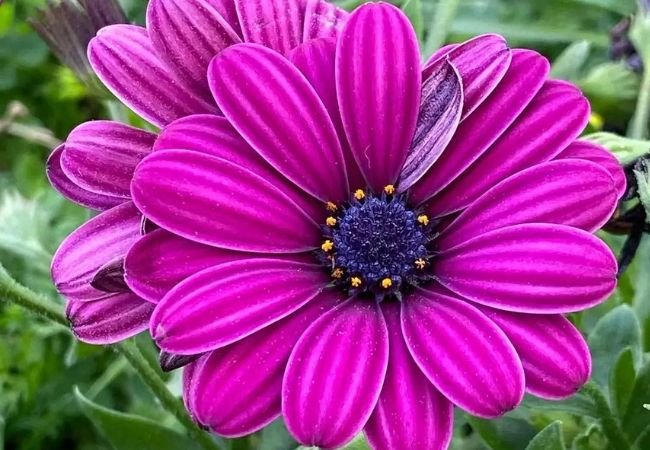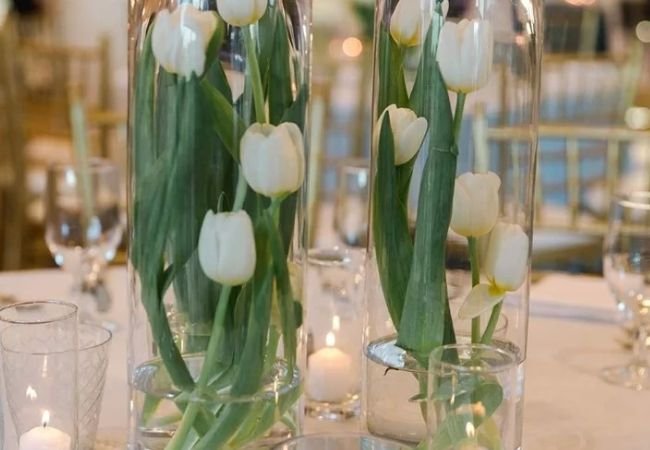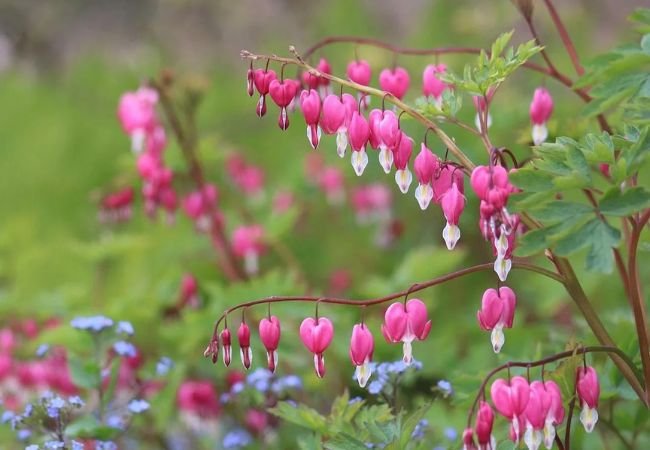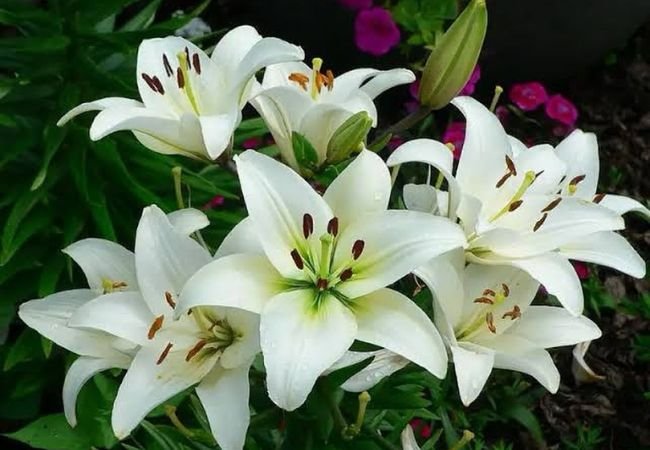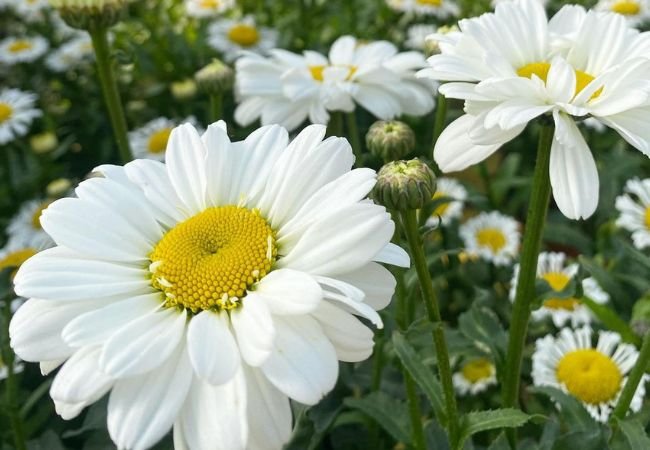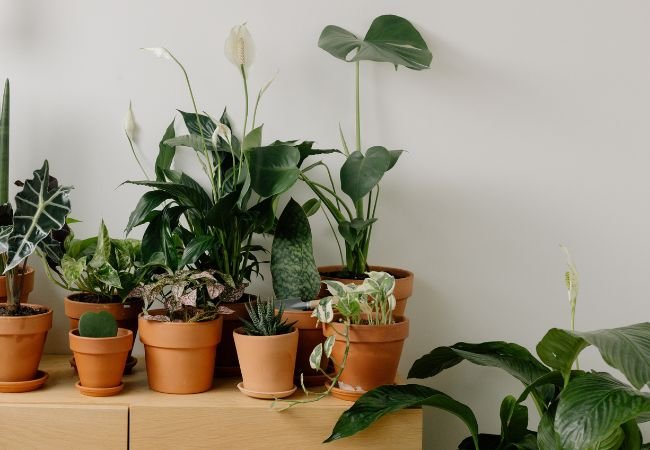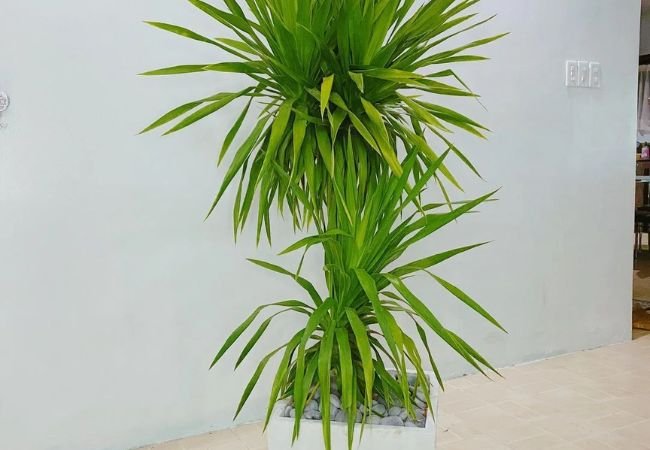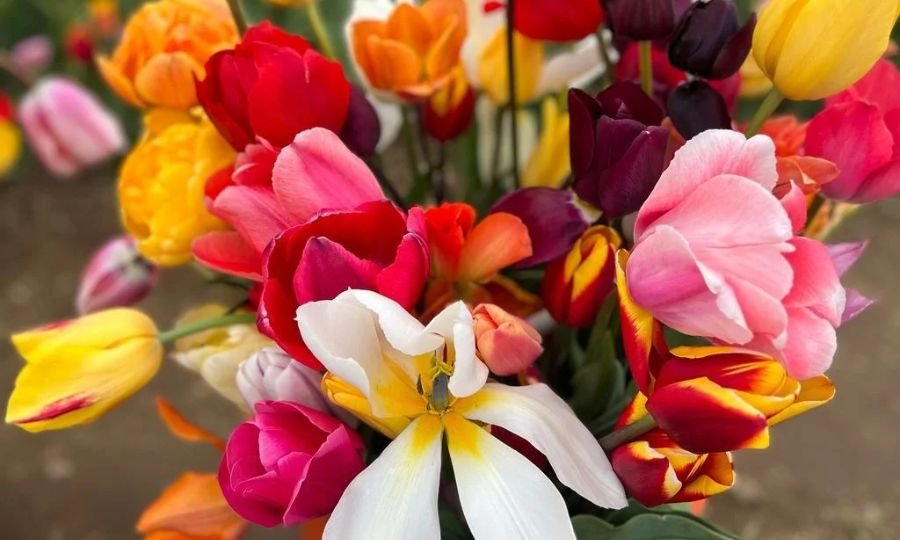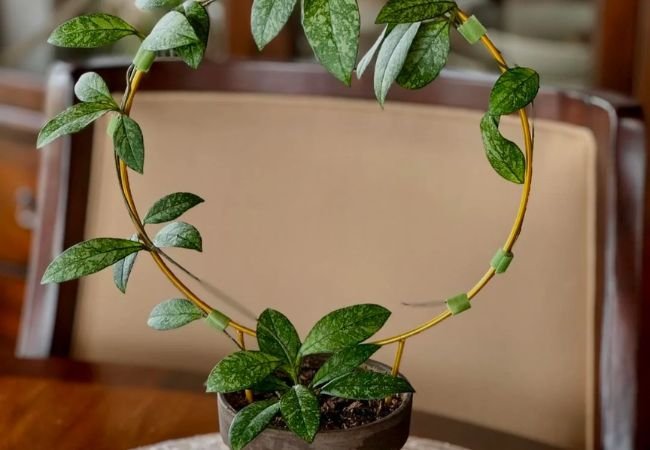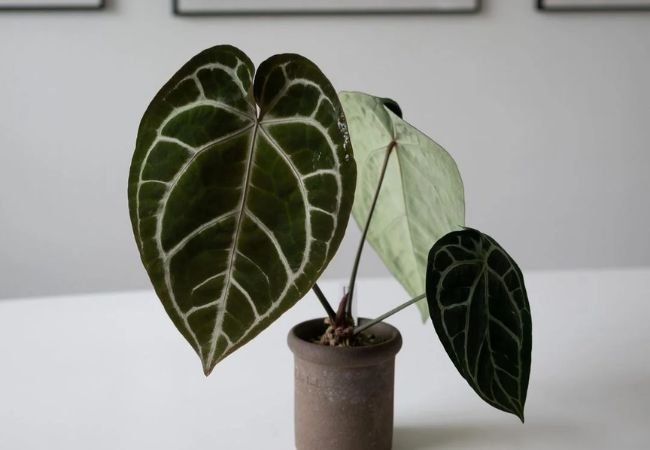Discover 19 outstanding flowers that start with O! From Orchids to Oriental Poppies, learn their unique traits and how to grow them beautifully in your garden.
Flowers make our gardens beautiful. Some flowers have names that start with the letter O. Let’s learn about 19 of these special flowers and how to grow them.
1. Orchid
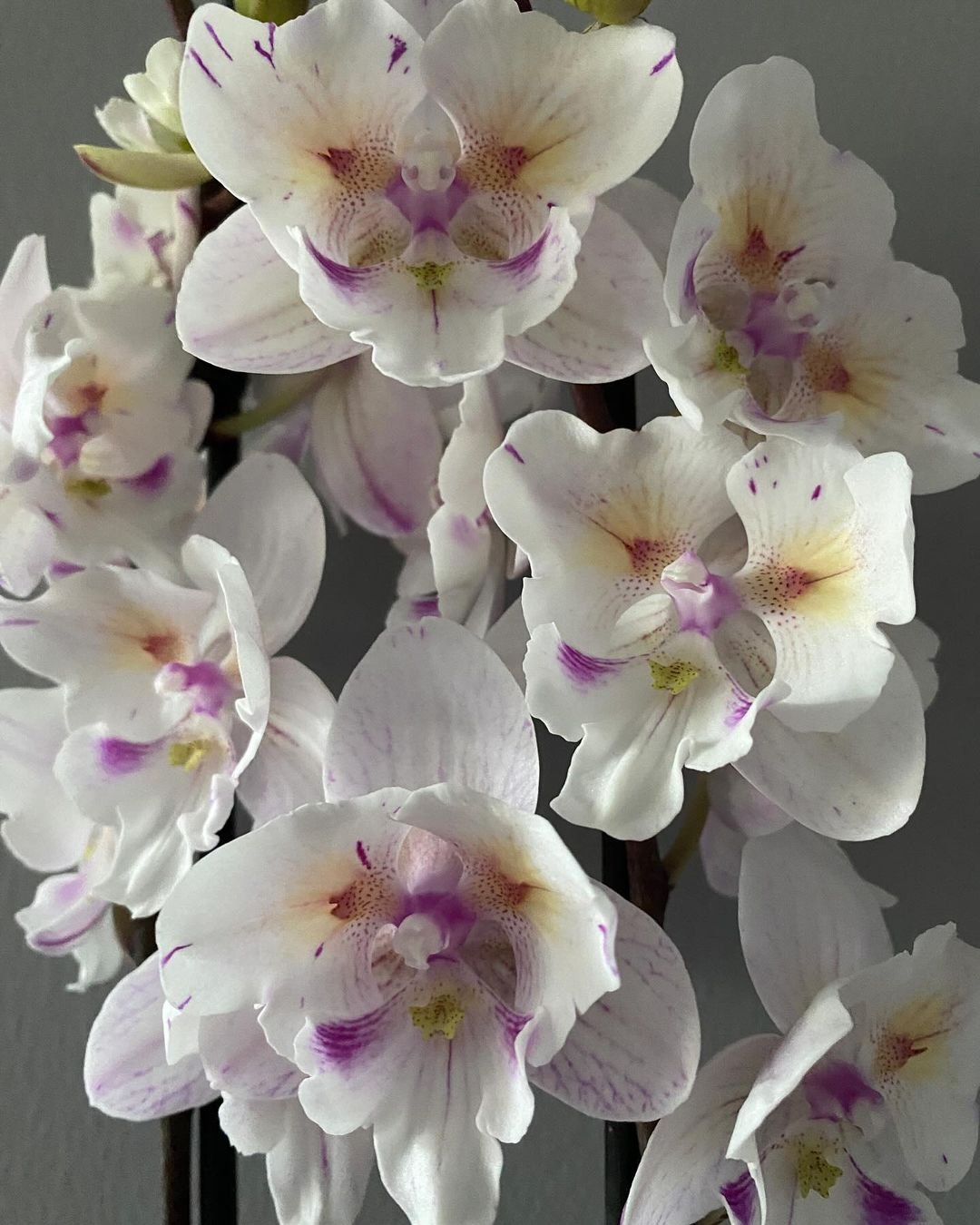
Here’s a chart with information about the Orchid flower:
| Aspect | Details |
|---|---|
| Botanical Name | Orchidaceae family |
| Common Name | Orchid |
| Plant Type | Perennial |
| Hardiness Zone | Varies widely (depends on species); often grown indoors |
| Sun Exposure | Indirect light to filtered sun |
| Soil Type | Epiphytic (air plants) or terrestrial (ground plants); specific to species |
| Watering Needs | Moderate; varies by species |
| Growth Habit | Varied; epiphytic orchids grow on other plants or surfaces, terrestrial orchids grow in soil |
| Height/Spread | Varies widely depending on species |
| Special Features | Highly diverse flowers in terms of shape, size, and color; blooms throughout the year depending on species; known for complex pollination mechanisms; popular as indoor plants due to their exotic appearance |
Orchids are beautiful flowers that come in many colors. They can be hard to grow but look amazing. Some orchids grow on trees, while others grow in the ground.
2. Oriental Poppy
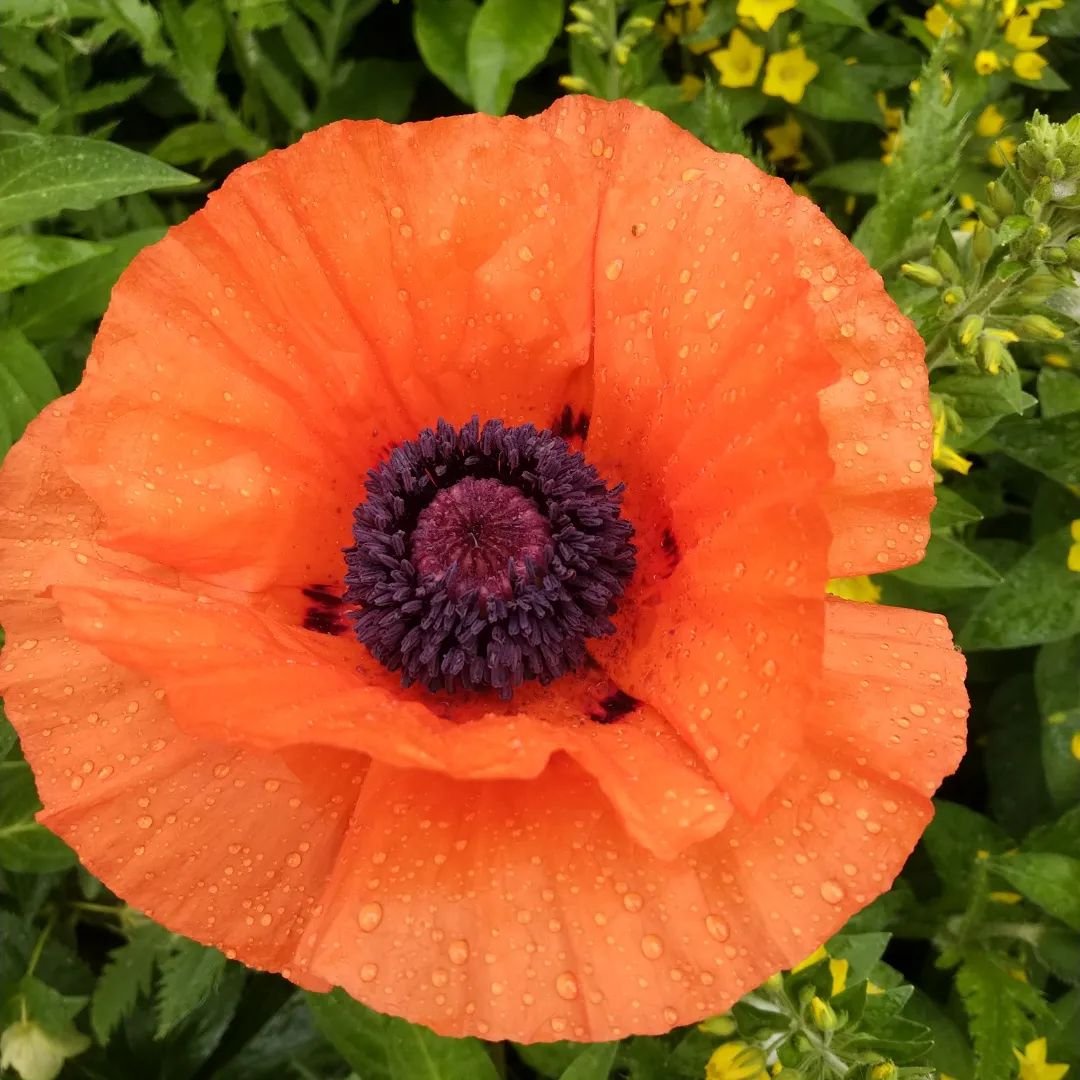
Here’s a chart with information about the Oriental Poppy flower:
| Aspect | Details |
|---|---|
| Botanical Name | Papaver orientale |
| Common Name | Oriental Poppy |
| Plant Type | Perennial |
| Hardiness Zone | Zones 3-7 |
| Sun Exposure | Full sun |
| Soil Type | Well-drained, fertile soil |
| Watering Needs | Moderate |
| Growth Habit | Upright, clumping |
| Height/Spread | 2-4 feet tall, 1-2 feet wide |
| Special Features | Large, silky, cup-shaped flowers in shades of red, orange, pink, or white; blooms in late spring to early summer; attractive to bees; deer-resistant; may go dormant in summer |
Oriental Poppies have big, bright flowers. They are usually orange or red. These flowers like full sun and bloom in early summer.
3. Oleander

Here’s a chart with information about the Oleander flower:
| Aspect | Details |
|---|---|
| Botanical Name | Nerium oleander |
| Common Name | Oleander |
| Plant Type | Evergreen shrub or small tree |
| Hardiness Zone | Zones 8-11 (typically grown as a shrub; may not tolerate frost) |
| Sun Exposure | Full sun |
| Soil Type | Well-drained soil |
| Watering Needs | Low to moderate |
| Growth Habit | Upright, bushy |
| Height/Spread | 6-12 feet tall, 4-8 feet wide |
| Special Features | Clusters of fragrant, funnel-shaped flowers in shades of white, pink, red, or yellow; glossy green leaves; drought-tolerant once established; toxic if ingested |
Oleander is a bush with pretty flowers. It can be pink, red, or white. Be careful, because oleander is poisonous if eaten.
4. Oxalis
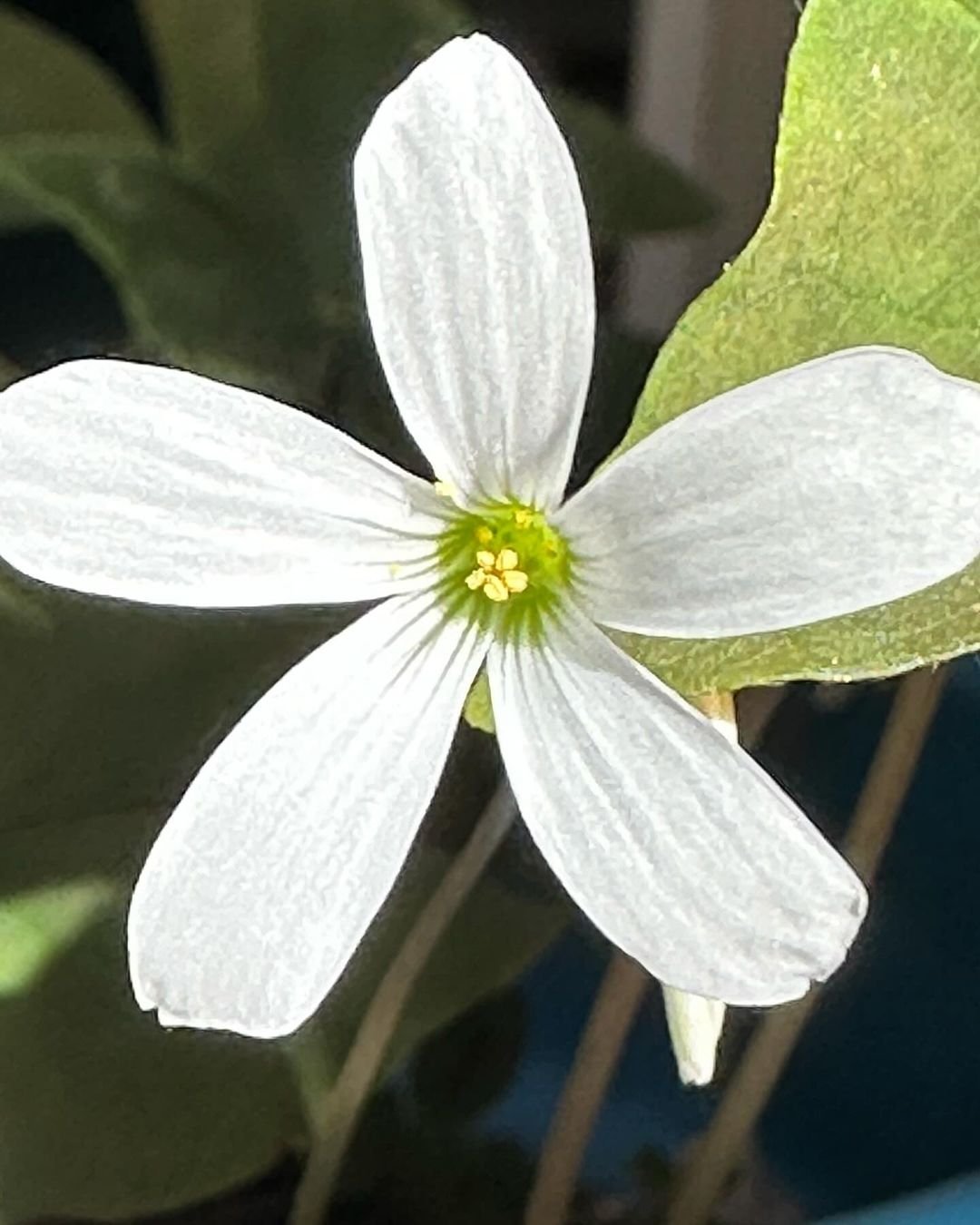
Here’s a chart with information about the Oxalis flower:
| Aspect | Details |
|---|---|
| Botanical Name | Oxalis spp. |
| Common Name | Oxalis, Wood Sorrel |
| Plant Type | Perennial or annual |
| Hardiness Zone | Zones 6-11 |
| Sun Exposure | Full sun to part shade |
| Soil Type | Well-drained, slightly acidic soil |
| Watering Needs | Moderate |
| Growth Habit | Low-growing, spreading |
| Height/Spread | 4-12 inches tall, 6-12 inches wide |
| Special Features | Triangular leaves that fold at night or in shade; flowers in shades of white, pink, yellow, or purple; blooms spring to fall; can be invasive; some species are edible |
Oxalis is also called Wood Sorrel. It has small flowers and leaves that look like clovers. Some types of Oxalis are good garden plants, while others can be weeds.
5. Osteospermum
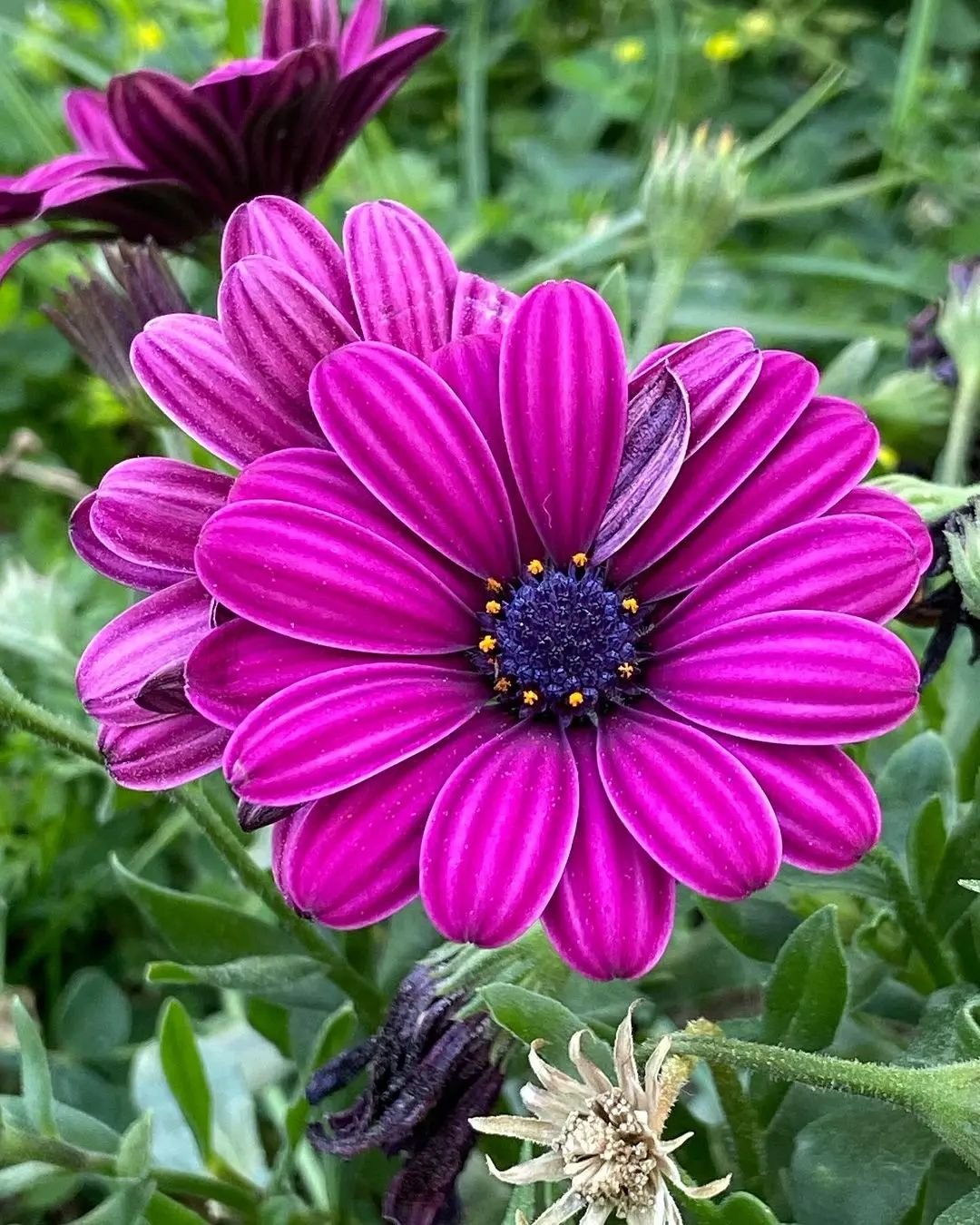
Here’s a chart with information about the Osteospermum flower:
| Aspect | Details |
|---|---|
| Botanical Name | Osteospermum spp. |
| Common Name | African Daisy, Cape Daisy |
| Plant Type | Perennial or annual |
| Hardiness Zone | Zones 9-11 (often grown as annuals elsewhere) |
| Sun Exposure | Full sun |
| Soil Type | Well-drained, sandy soil |
| Watering Needs | Moderate |
| Growth Habit | Low-growing, spreading |
| Height/Spread | 6-12 inches tall, 12-24 inches wide |
| Special Features | Daisy-like flowers in shades of purple, pink, white, or orange; blooms spring to fall; drought-tolerant; attracts butterflies; suitable for borders, containers, and rock gardens |
Osteospermum is also called African Daisy. It has flowers that look like daisies in many colors. These plants like full sun and are good for gardens in warm places.
6. Obedient
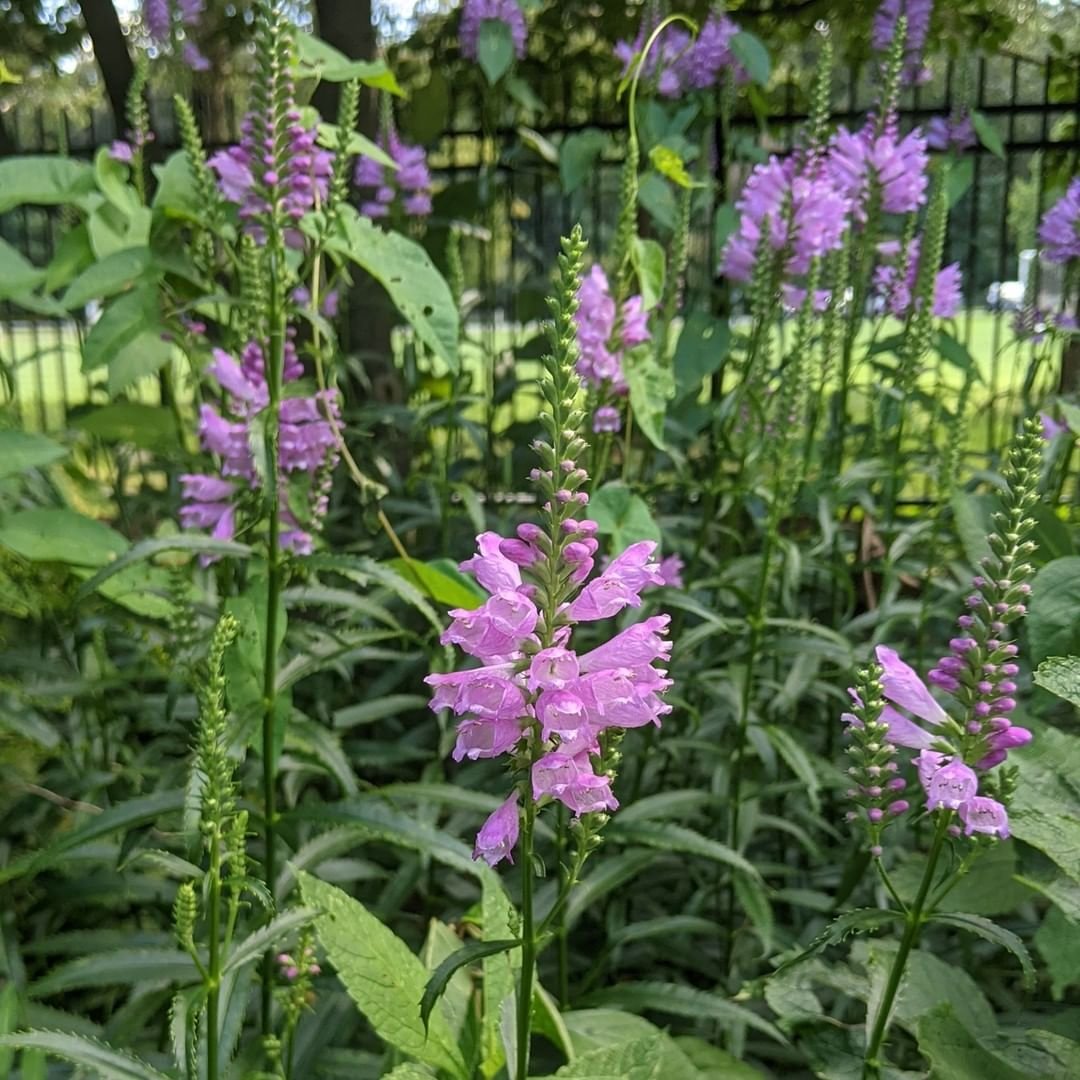
Here’s a chart with information about it:
| Aspect | Details |
|---|---|
| Botanical Name | Physostegia virginiana |
| Common Name | Obedient Plant |
| Plant Type | Perennial |
| Hardiness Zone | Zones 3-9 |
| Sun Exposure | Full sun to part shade |
| Soil Type | Moist, well-drained soil |
| Watering Needs | Moderate to high |
| Growth Habit | Upright, clumping |
| Height/Spread | 2-4 feet tall, 1-2 feet wide |
| Special Features | Tubular, snapdragon-like flowers that can be moved and will stay in position for a time after being pushed into different positions; blooms in summer; attracts bees and butterflies; deer-resistant |
The Obedient Plant got its name because you can move its flowers, and they stay in place. It has pink or white flowers on tall stems.
7. Oenothera
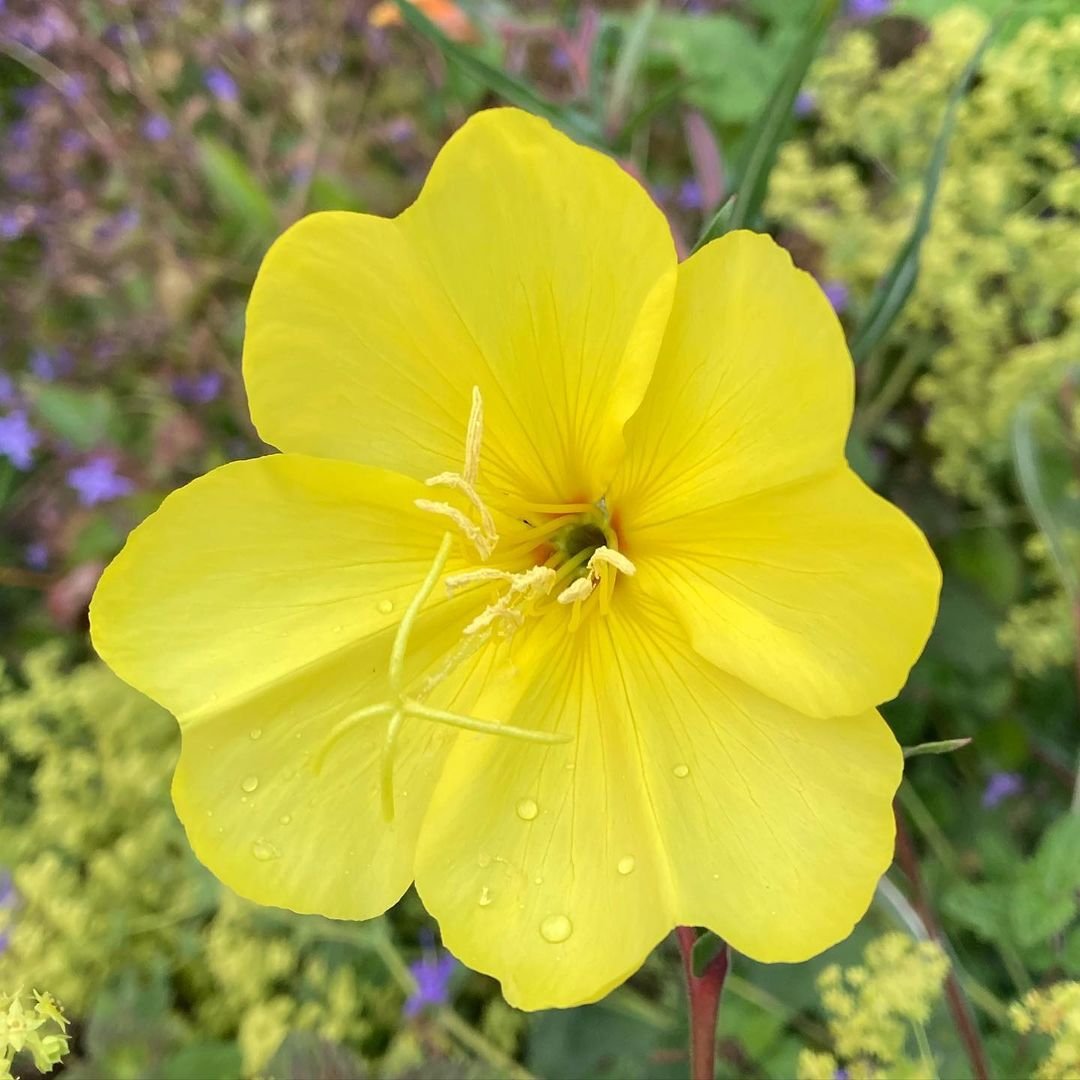
Here’s a chart with information about the Evening Primrose flower:
| Aspect | Details |
|---|---|
| Botanical Name | Oenothera spp. |
| Common Name | Evening Primrose |
| Plant Type | Biennial or perennial |
| Hardiness Zone | Zones 3-9 |
| Sun Exposure | Full sun to part shade |
| Soil Type | Well-drained |
| Watering Needs | Moderate |
| Growth Habit | Upright |
| Height/Spread | 1-5 feet tall, 1-2 feet wide |
| Special Features | Large, fragrant flowers that open in the evening and last through the night; blooms in late spring to summer; attracts pollinators like moths; used in herbal medicine for its oil-rich seeds |
Oenothera flowers open in the evening. They are usually yellow and smell nice. These plants are easy to grow and like sunny spots.
8. Orange Blossom
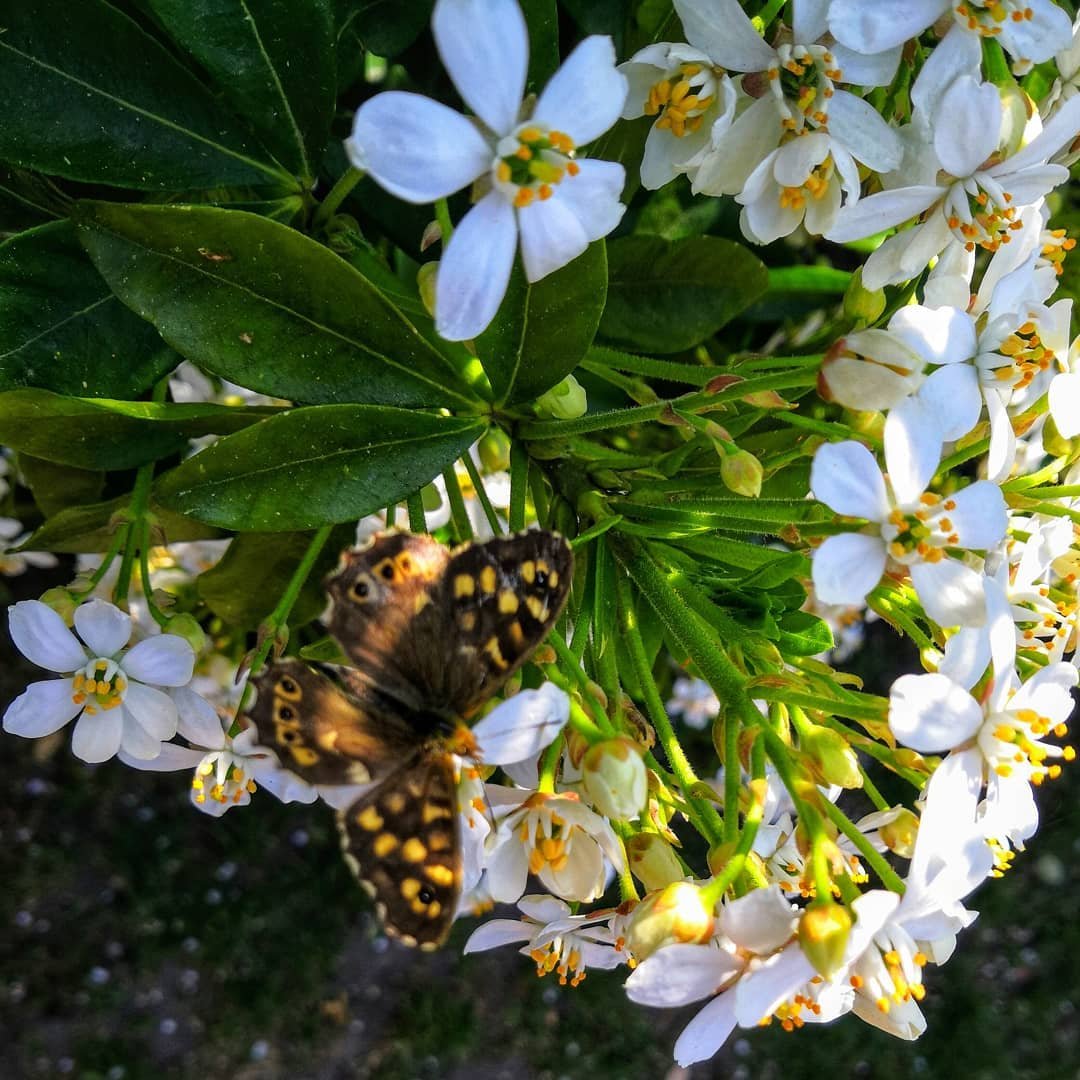
Here’s a chart with information about the Orange Blossom flower:
| Aspect | Details |
|---|---|
| Botanical Name | Citrus sinensis |
| Common Name | Orange Blossom |
| Plant Type | Evergreen tree |
| Hardiness Zone | Zones 9-11 |
| Sun Exposure | Full sun |
| Soil Type | Well-drained, sandy loam |
| Watering Needs | Moderate |
| Growth Habit | Medium-sized tree |
| Height/Spread | 20-30 feet tall, 15-25 feet wide |
| Special Features | Highly fragrant white flowers with five petals; blooms in spring; attracts bees; produces oranges; symbolic in various cultures for purity, fertility, and good fortune |
Orange Blossoms are the flowers of orange trees. They are white and smell very sweet. These flowers are used to make perfume.
9. Ornithogalum
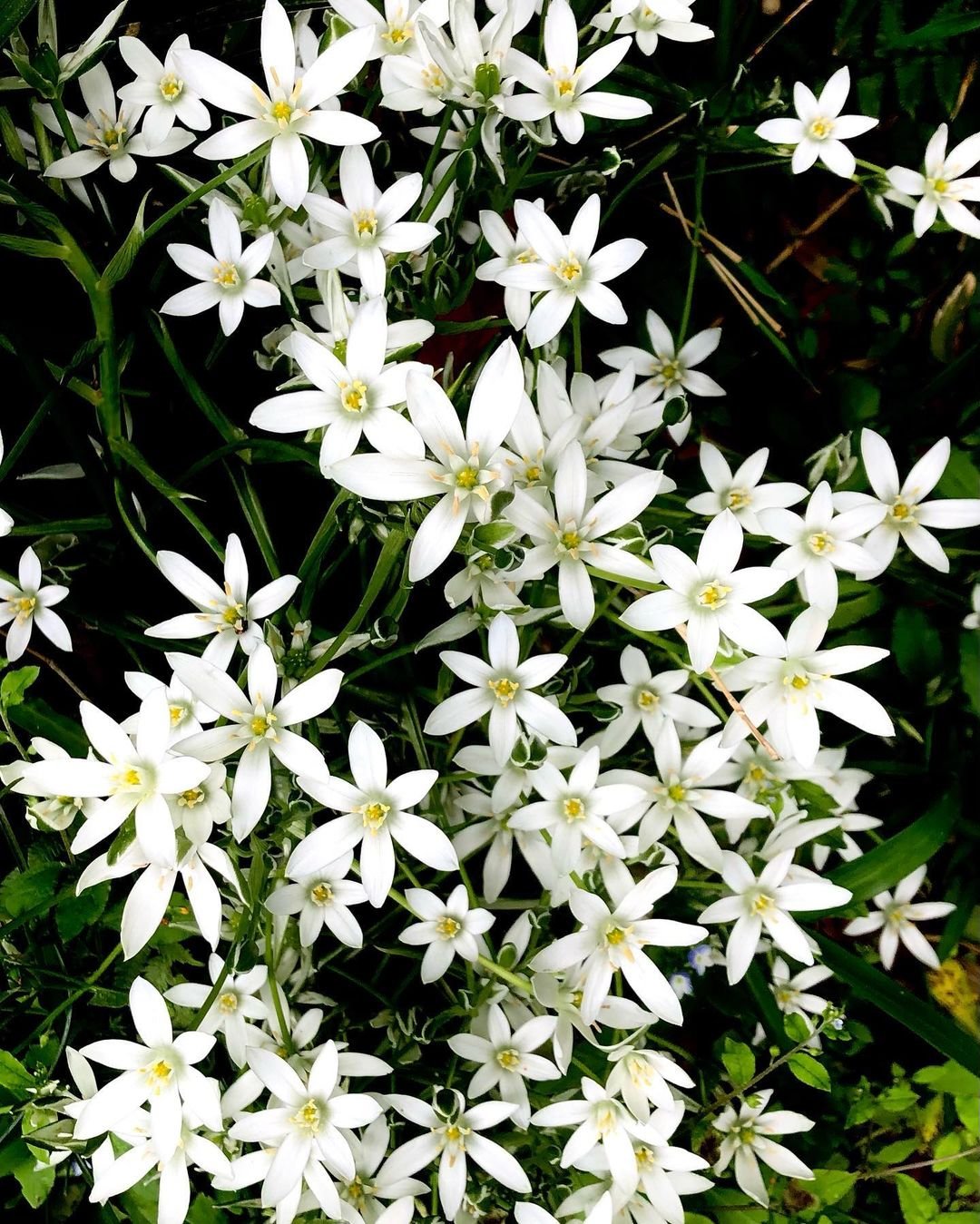
Here’s a chart with information about the Star of Bethlehem flower:
| Aspect | Details |
|---|---|
| Botanical Name | Ornithogalum spp. |
| Common Name | Star of Bethlehem |
| Plant Type | Bulbous perennial |
| Hardiness Zone | Zones 5-9 |
| Sun Exposure | Full sun to part shade |
| Soil Type | Well-drained |
| Watering Needs | Moderate |
| Growth Habit | Upright, clumping |
| Height/Spread | 6-18 inches tall, 6-12 inches wide |
| Special Features | Star-shaped, white flowers arranged in clusters; blooms in spring; attracts bees; can be invasive in some regions; often used in floral arrangements and naturalizing landscapes |
Ornithogalum has star-shaped white flowers. It grows from bulbs and can spread quickly. Some people think it’s pretty, while others see it as a weed.
10. Oxeye Daisy
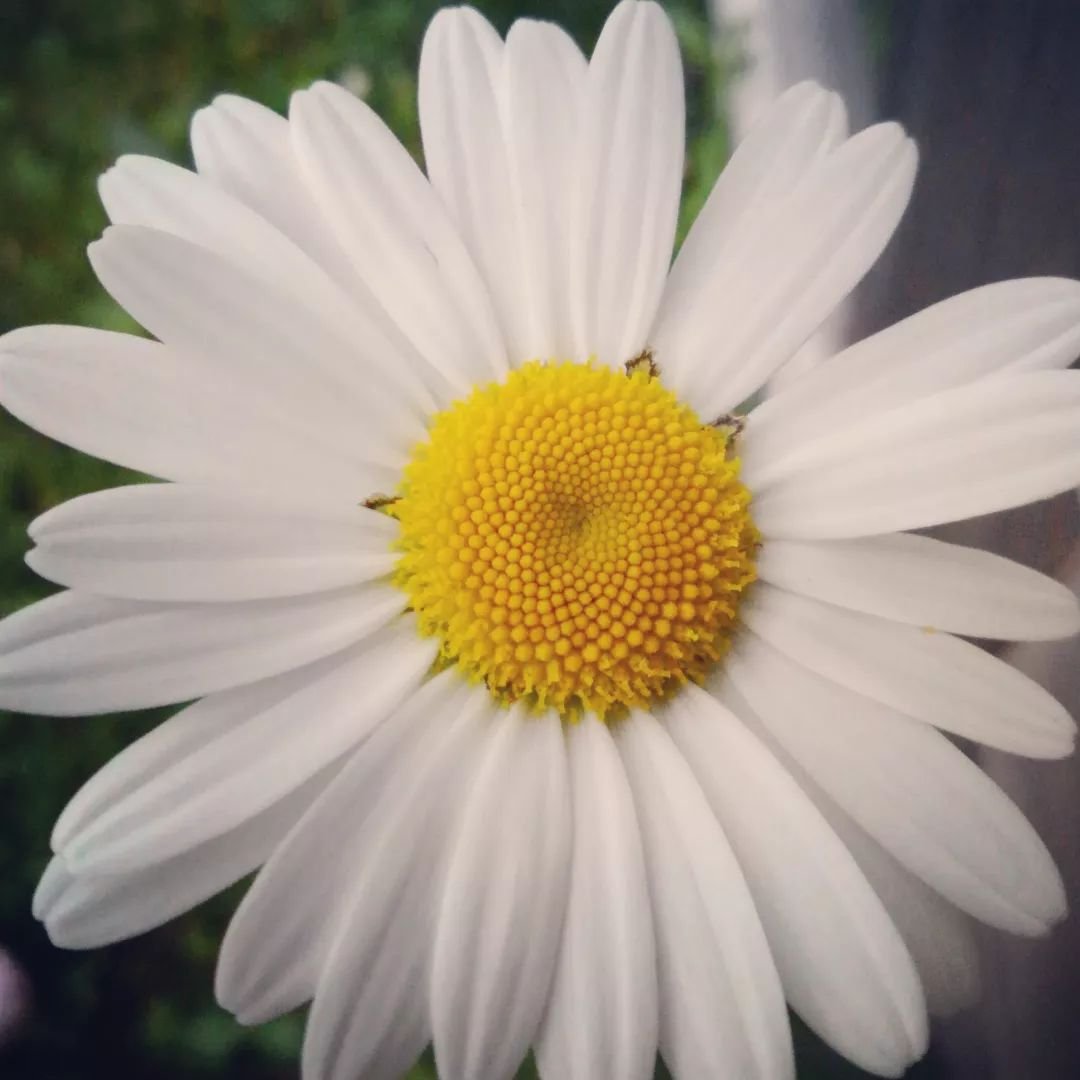
Here’s a chart with information about the Oxeye Daisy flower:
| Aspect | Details |
|---|---|
| Botanical Name | Leucanthemum vulgare |
| Common Name | Oxeye Daisy |
| Plant Type | Perennial |
| Hardiness Zone | Zones 3-9 |
| Sun Exposure | Full sun to part shade |
| Soil Type | Well-drained |
| Watering Needs | Low to moderate |
| Growth Habit | Upright, clumping |
| Height/Spread | 1-3 feet tall, 1-2 feet wide |
| Special Features | Daisy-like flowers with white petals and yellow centers; blooms in late spring to summer; attracts butterflies and bees; deer-resistant; good for naturalizing in meadows and cottage gardens |
Oxeye Daisies look like big white daisies with yellow centers. They are easy to grow and can spread fast. Some places see them as wildflowers, while others think they’re weeds.
11. Omphalodes
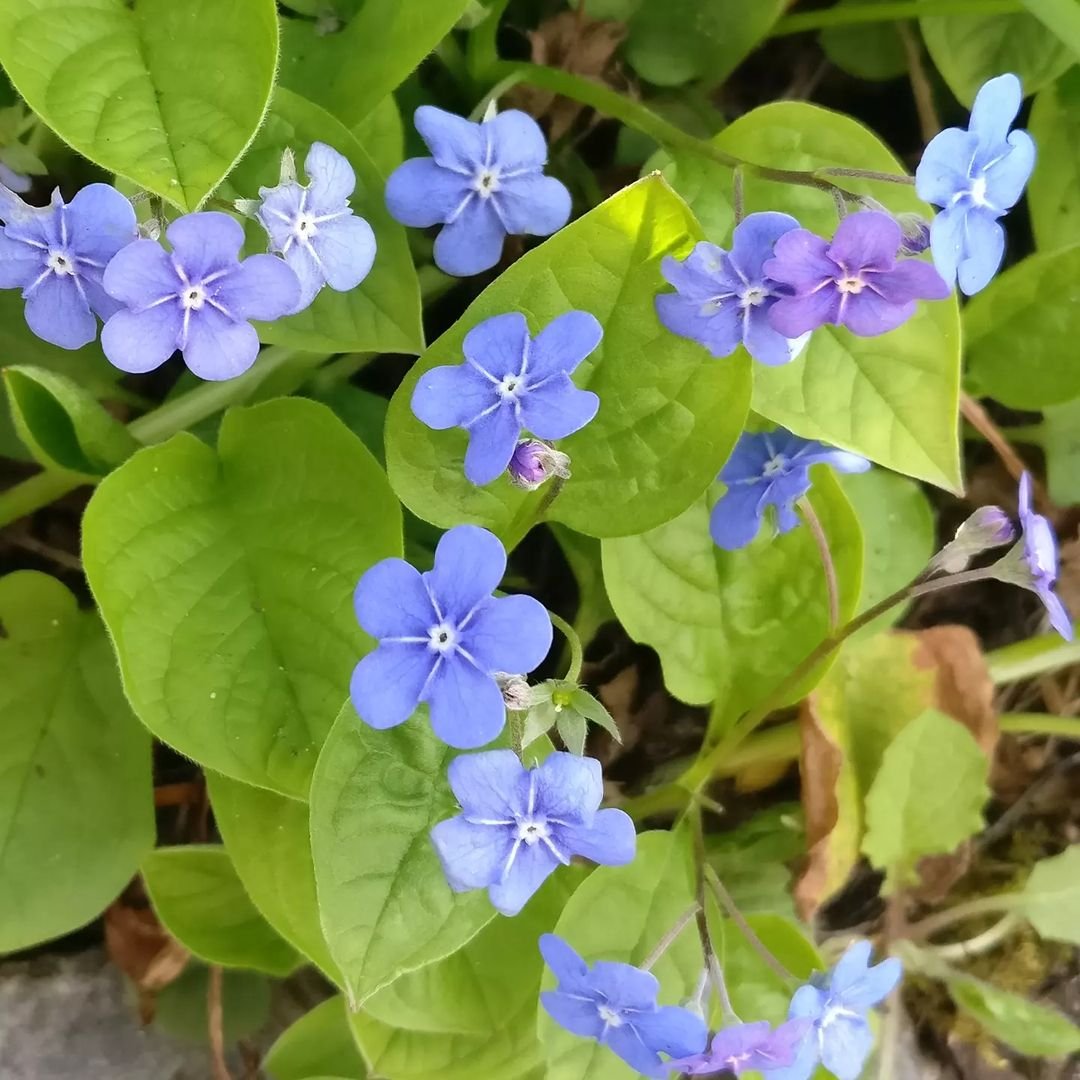
Here’s a chart with information about the Omphalodes (Navelwort) flower:
| Aspect | Details |
|---|---|
| Botanical Name | Omphalodes spp. |
| Common Name | Navelwort |
| Plant Type | Perennial |
| Hardiness Zone | Zones 5-9 |
| Sun Exposure | Part shade to full shade |
| Soil Type | Well-drained, moist |
| Watering Needs | Moderate |
| Growth Habit | Spreading, low-growing |
| Height/Spread | 6-12 inches tall, 12-18 inches wide |
| Special Features | Small, forget-me-not-like flowers in shades of blue or white; blooms in spring to early summer; attracts pollinators; suitable for woodland gardens, borders, and rock gardens |
Omphalodes has small blue flowers that look like forget-me-nots. It likes shady spots and is good for ground cover.
12. Osteomeles
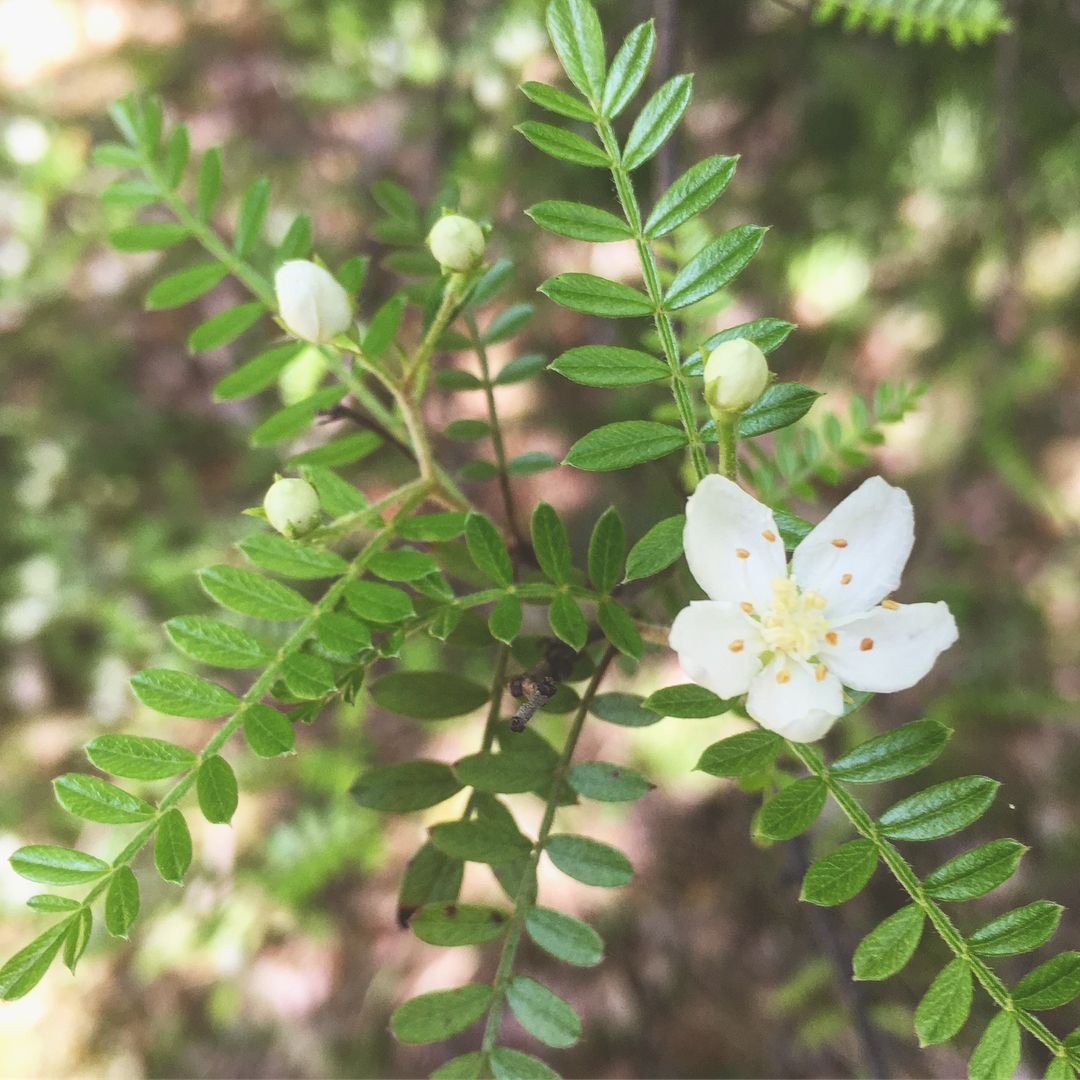
Here’s a chart with information about the Osteomeles flower:
| Aspect | Details |
|---|---|
| Botanical Name | Osteomeles anthyllidifolia |
| Common Name | Osteomeles |
| Plant Type | Evergreen shrub |
| Hardiness Zone | Zones 9-11 |
| Sun Exposure | Full sun to part shade |
| Soil Type | Well-drained, fertile soil |
| Watering Needs | Moderate |
| Growth Habit | Upright, bushy |
| Height/Spread | 4-6 feet tall, 4-6 feet wide |
| Special Features | Clusters of small white flowers; glossy green leaves; drought-tolerant once established; attracts birds; suitable for hedges and landscaping |
Osteomeles is a bush with small white flowers and red berries. It’s often used for bonsai because it has small leaves.
13. Oncidium Orchid
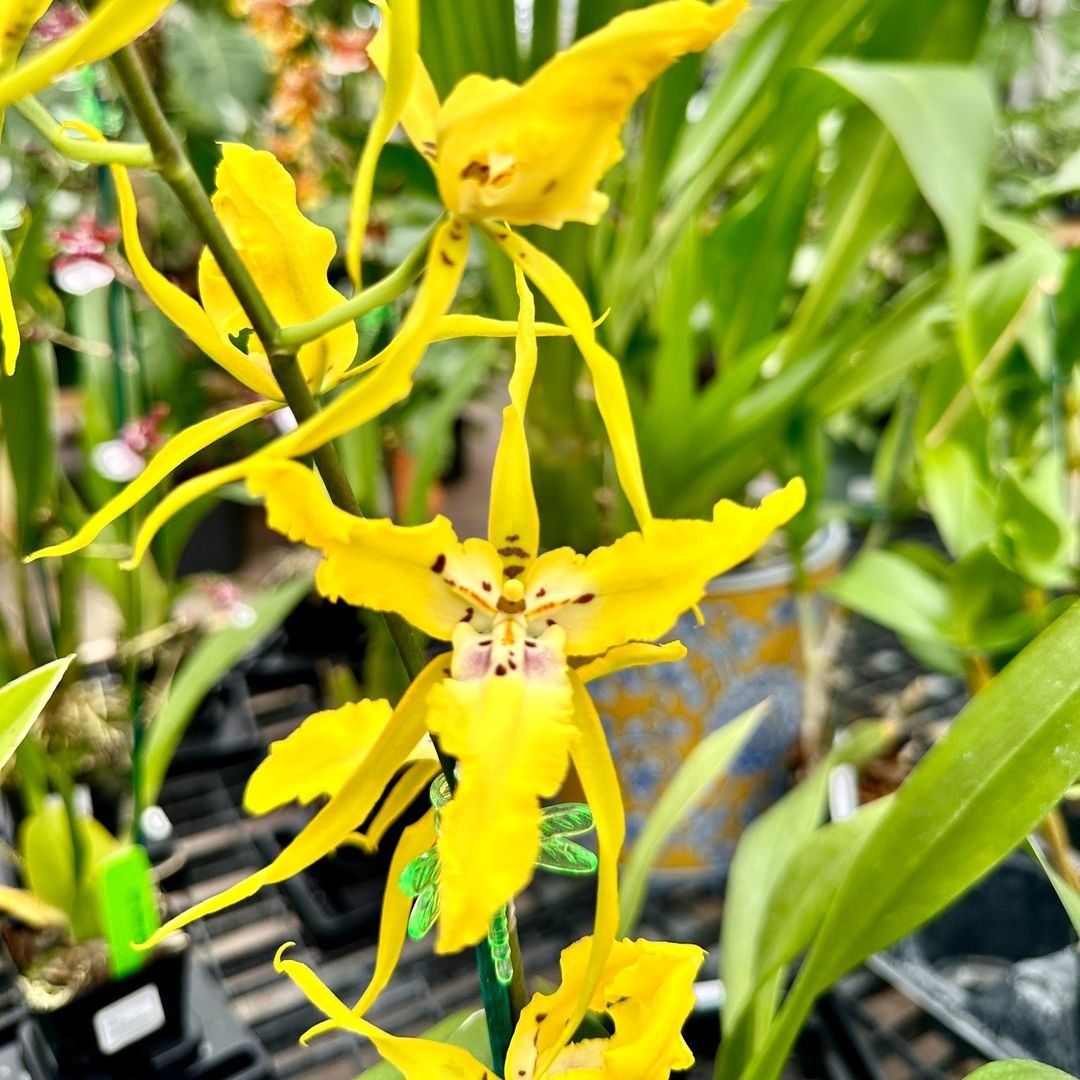
Here’s a chart with information about the Oncidium Orchid flower:
| Aspect | Details |
|---|---|
| Botanical Name | Oncidium spp. |
| Common Name | Oncidium Orchid |
| Plant Type | Epiphytic or lithophytic orchid |
| Hardiness Zone | Zones 10-12 |
| Sun Exposure | Bright, indirect light |
| Soil Type | Orchid bark mix or sphagnum moss |
| Watering Needs | Moderate; allow to dry slightly between waterings |
| Growth Habit | Clumping, pseudobulbs |
| Height/Spread | Varies widely; generally 1-3 feet tall |
| Special Features | Showy sprays of flowers with intricate patterns and bright colors (yellow, orange, red, brown); blooms last several weeks to months; popular for indoor cultivation; requires high humidity and good air circulation |
Oncidium Orchids are also called Dancing Lady Orchids. They have many small flowers that look like dancing ladies.
14. Ozothamnus
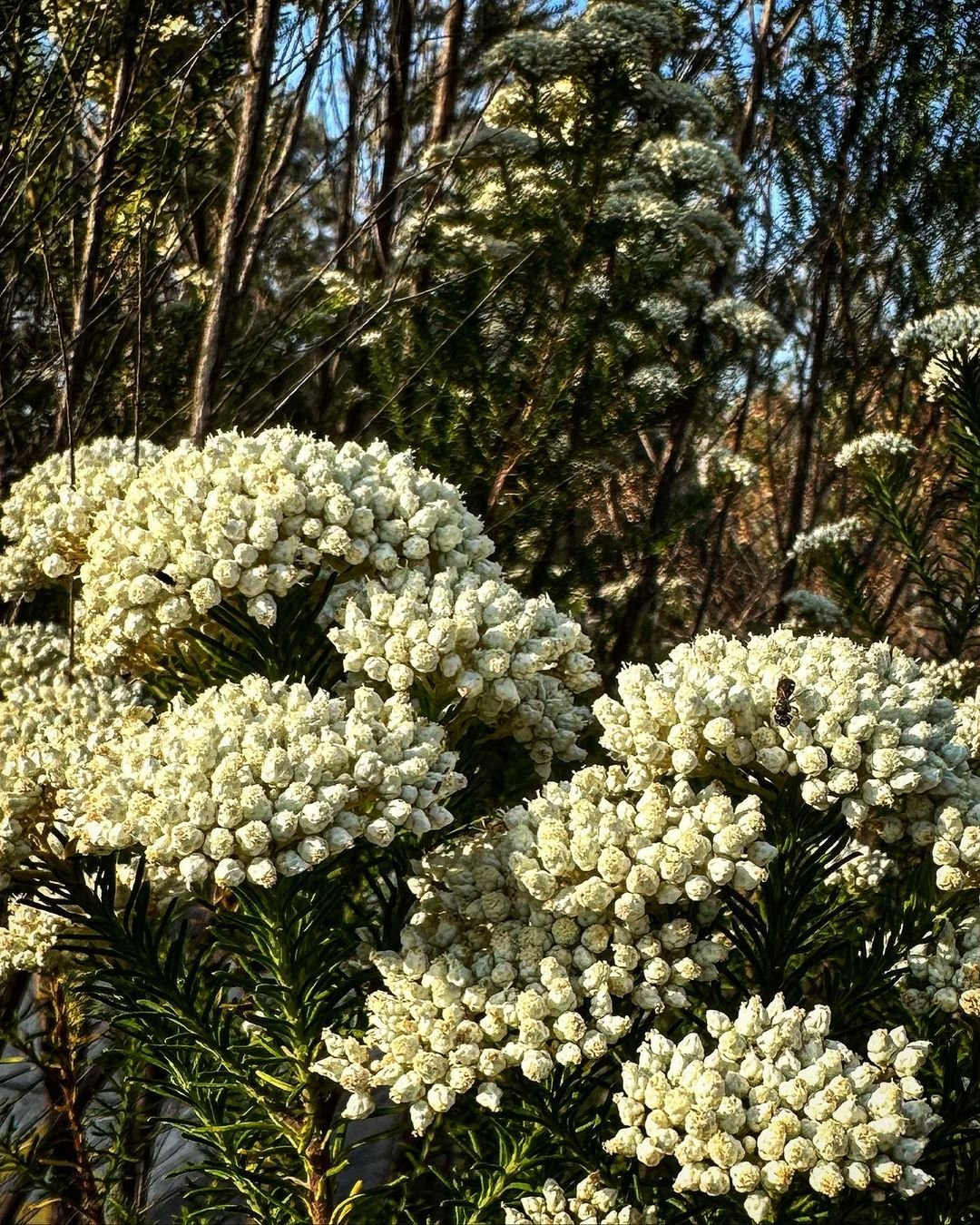
Here’s a chart with information about the Ozothamnus flower:
| Aspect | Details |
|---|---|
| Botanical Name | Ozothamnus spp. |
| Common Name | Ozothamnus |
| Plant Type | Evergreen shrub |
| Hardiness Zone | Zones 9-11 |
| Sun Exposure | Full sun to part shade |
| Soil Type | Well-drained, sandy soil |
| Watering Needs | Low to moderate |
| Growth Habit | Upright |
| Height/Spread | 3-6 feet tall, 2-4 feet wide |
| Special Features | Small, white or pink flowers in clusters; aromatic foliage; drought-tolerant once established; attracts bees and butterflies; suitable for coastal gardens and native plant landscapes |
Ozothamnus is a bush with lots of tiny white flowers. It’s also called Rice Flower. The flowers are good for dried arrangements.
15. Orostach
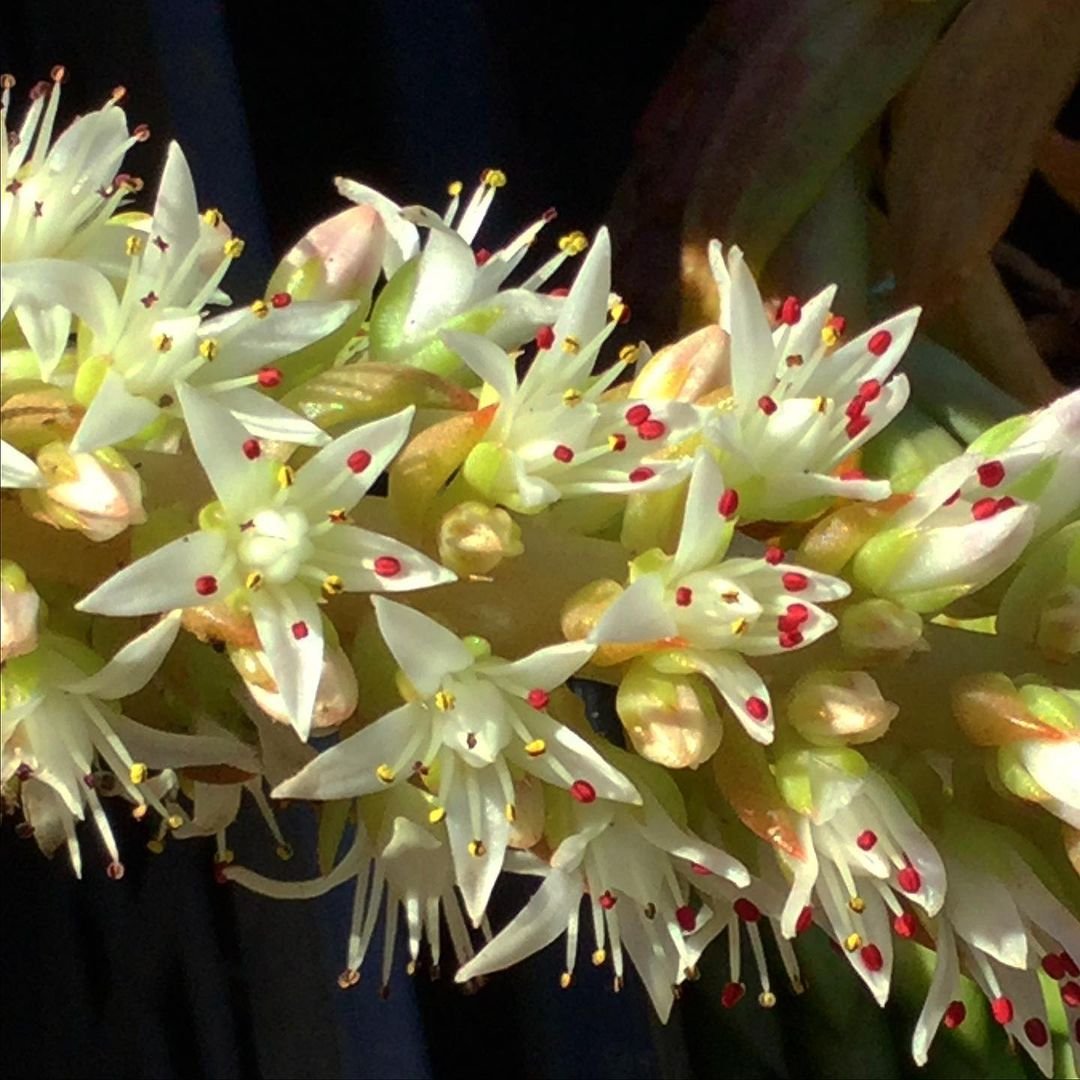
Certainly! Here’s a formatted chart with information about the Orostachys flower:
| Aspect | Details |
|---|---|
| Botanical Name | Orostachys iwarenge |
| Common Name | Chinese Dunce Cap |
| Plant Type | Perennial succulent |
| Hardiness Zone | Zones 5-9 |
| Sun Exposure | Full sun to partial shade |
| Soil Type | Well-drained, sandy or rocky soil |
| Watering Needs | Low; drought-tolerant |
| Growth Habit | Rosette forming, ground cover |
| Height/Spread | 2-6 inches tall / 6-12 inches spread |
| Special Features | Unique rosette shape, attractive during winter, low maintenance |
Orostachys is a succulent plant with small flowers. It looks like a green rose before it blooms. This plant is good for rock gardens.
16. Ornamental Onion
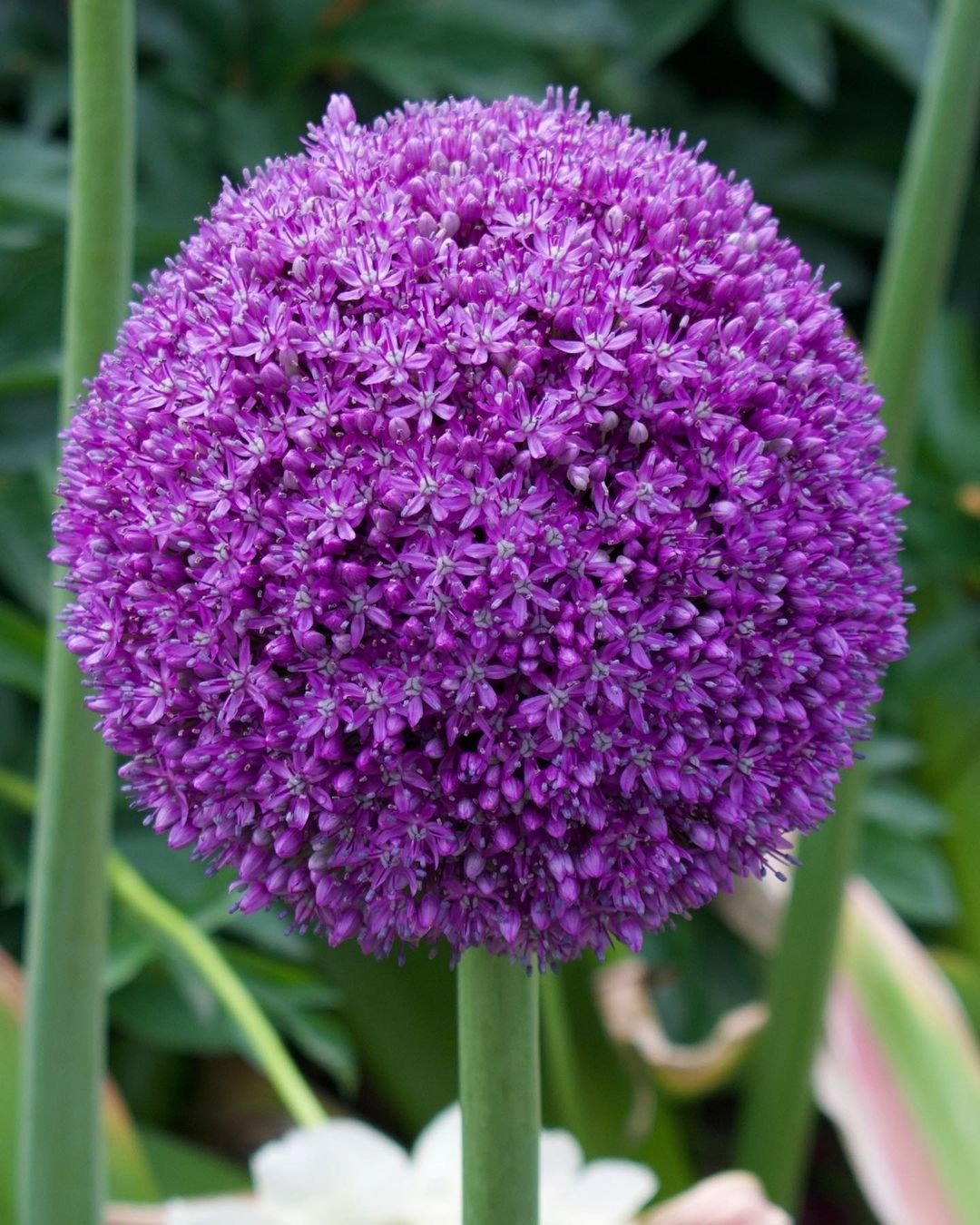
Certainly! Here’s a formatted chart with information about the Ornamental Onion flower:
| Aspect | Details |
|---|---|
| Botanical Name | Allium spp. |
| Common Name | Ornamental Onion |
| Plant Type | Perennial bulb |
| Hardiness Zone | Zones 4-9 |
| Sun Exposure | Full sun |
| Soil Type | Well-drained, sandy or loamy soil |
| Watering Needs | Moderate; drought-tolerant once established |
| Growth Habit | Upright, clumping |
| Height/Spread | 12-48 inches tall / 6-12 inches spread (varies by species) |
| Special Features | Globular flower heads, attracts pollinators, deer and rabbit resistant, long-lasting blooms |
Ornamental Onions have round flower heads made up of many small flowers. They come in purple, pink, or white. These plants are related to the onions we eat.
17. Oswego Tea
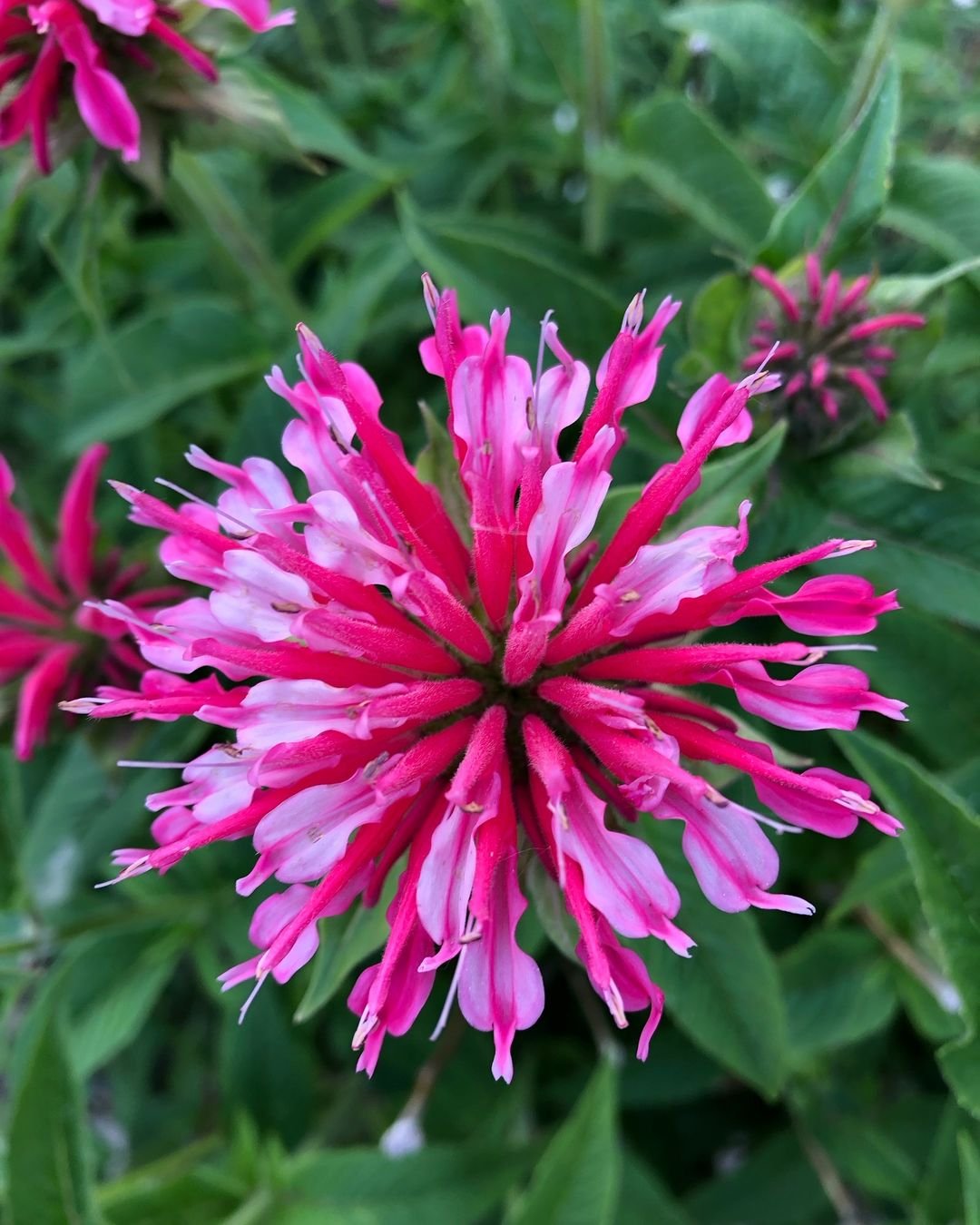
Certainly! Here’s a formatted chart with information about the Oswego Tea flower:
| Aspect | Details |
|---|---|
| Botanical Name | Monarda didyma |
| Common Name | Oswego Tea, Bee Balm |
| Plant Type | Perennial herb |
| Hardiness Zone | Zones 4-9 |
| Sun Exposure | Full sun to partial shade |
| Soil Type | Moist, well-drained soil |
| Watering Needs | Regular; keep soil consistently moist |
| Growth Habit | Upright, clumping |
| Height/Spread | 2-4 feet tall / 1.5-3 feet spread |
| Special Features | Showy, aromatic flowers, attracts bees, butterflies, and hummingbirds, medicinal uses, deer resistant |
Oswego Tea is also called Bee Balm. It has red, pink, or purple flowers that look like spiky balls. This plant attracts bees and butterflies.
18. Oyster
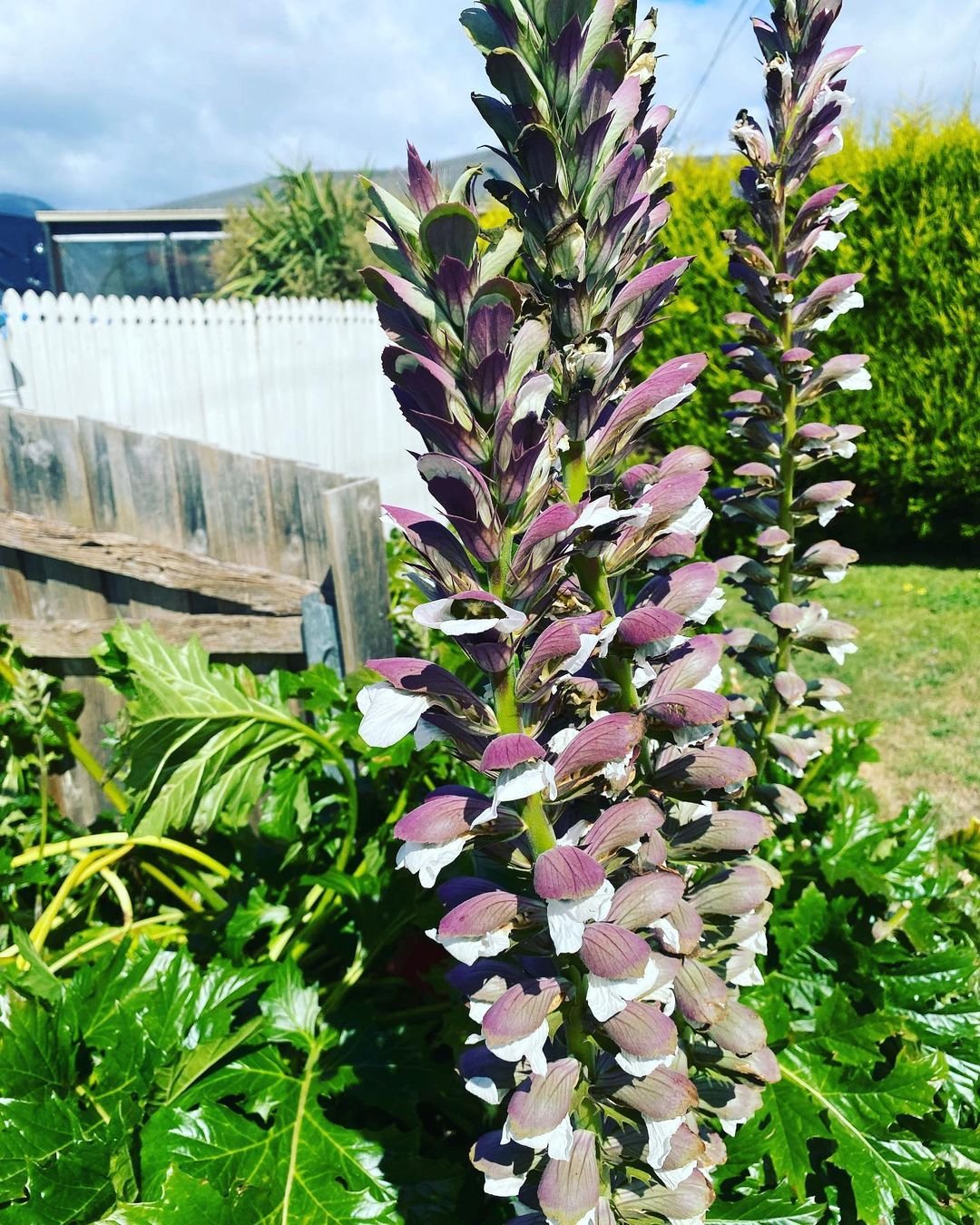
Certainly! Here’s a formatted chart with information about the Oyster flower:
| Aspect | Details |
|---|---|
| Botanical Name | Tacca chantrieri |
| Common Name | Black Bat Flower, Bat Flower, Oyster Flower |
| Plant Type | Perennial herb |
| Hardiness Zone | Zones 9-11 |
| Sun Exposure | Partial shade to full shade |
| Soil Type | Well-drained, rich, and moist soil |
| Watering Needs | Regular; keep soil consistently moist but not waterlogged |
| Growth Habit | Upright, clumping |
| Height/Spread | 2-3 feet tall / 1-2 feet spread |
| Special Features | Unique bat-shaped flowers with long whiskers, attracts attention, exotic appearance, prefers humid environments |
The Oyster Plant is also called Boat Lily. It has small white flowers and leaves that are purple underneath. This plant is good for indoor gardens.
19. Olearia
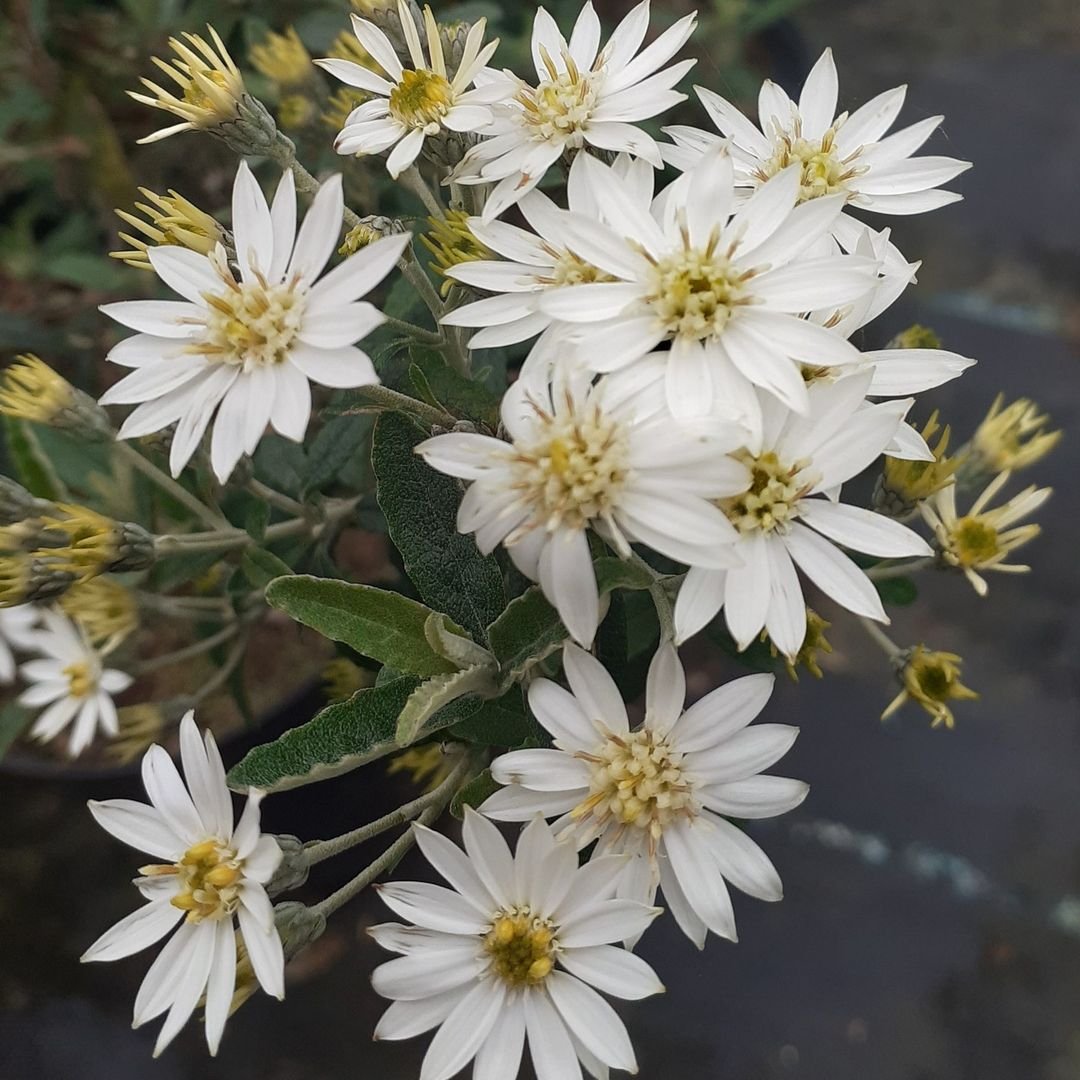
Certainly! Here’s a formatted chart with information about the Olearia flower:
| Aspect | Details |
|---|---|
| Botanical Name | Olearia spp. |
| Common Name | Daisy Bush, Olearia |
| Plant Type | Evergreen shrub |
| Hardiness Zone | Zones 8-10 |
| Sun Exposure | Full sun to partial shade |
| Soil Type | Well-drained soil |
| Watering Needs | Moderate; drought-tolerant once established |
| Growth Habit | Upright, bushy |
| Height/Spread | 3-10 feet tall / 3-6 feet spread (varies by species) |
| Special Features | Daisy-like flowers, fragrant foliage, attracts pollinators, salt-tolerant, low maintenance |
Olearia is called the New Zealand Daisy Bush. It has lots of small daisy-like flowers. This plant is good for coastal gardens because it can handle salty air.
These 19 flowers that start with O can make your garden special. Remember to check what grows best in your area before you plant. Happy gardening!

